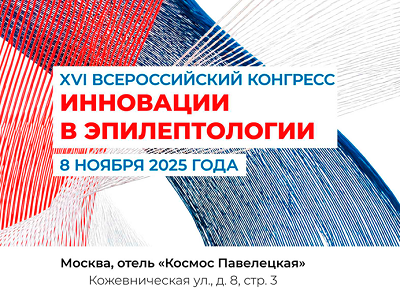The use of intravenous valproic acid in patients with epileptic seizures developing during radiation therapy following glial tumor surgery
https://doi.org/10.17749/2077-8333.2019.11.3.278-284
Abstract
Objective: to study the effect of valproic acid on epileptic seizures developing during radiation therapy (RT) following glioma surgery in patients taking antiepileptic drugs (AED).
Materials and methods. This prospective observational study involved 879 patients aged 18-78 with glioblastomas (GM) who were receiving RT. The patients underwent clinical and neurological examination, electroencephalography (EEG), and neuroimaging tests. After the examination and surgical treatment, patients were prescribed RT. During an RT procedure, the patient has to stay in a steady non-moving position for 30 min. To prevent the patient from developing sporadic or serial seizures during RT, we used valproic acid administered via the intravenous route. The efficacy and safety of valproic acid were evaluated together with the outcomes of RT.
Results. Of 879 participants, symptomatic epilepsy was detected in 147 patients (16.7%). An increase in epileptic seizures (even under basic AED therapy) after surgery for GM was noted on days14-21 after the start of RT (i.e. between the 7 and 11th RT session) in 65 of 147 patients (44.2%). The iv administration of valproic acid allowed all 65 patients to complete the course of RT. No adverse events associated with the use of valproic acid were reported.
Conclusion. This observation from our clinical practice allows us to recommend valproic acid for the treatment of epileptic seizures (focal and generalized) developing during radiotherapy after surgery for GM. The treatment should be accompanied by clinical, neurological and EEG monitoring.
About the Authors
A. S. ShersheverRussian Federation
MD, PhD, Professor at the Department of Nervous Diseases, Neurosurgery and Medical Genetics,
29 Sobolev Str., Yekaterinburg 620036, Sverdlovsk Region;
3 Repina Str., Yekaterinburg 620036, Sverdlovsk Region
D. L. Benzion
Russian Federation
MD, PhD, Head of Radiotherapy Unit,
29 Sobolev Str., Yekaterinburg 620036, Sverdlovsk Region
S. A. Lavrova
Russian Federation
MD, PhD, Expert in Functional Diagnostics,
29 Sobolev Str., Yekaterinburg 620036, Sverdlovsk Region
Y. A. Mironova
Russian Federation
MD, Expert in Functional Diagnostics,
29 Sobolev Str., Yekaterinburg 620036, Sverdlovsk Region
G. V. Cherkasov
MD, PhD, Head of the Department of Anesthesiology and Intensive Care,
29 Sobolev Str., Yekaterinburg 620036, Sverdlovsk Region
References
1. Rudà R., Trevisan E., Soffietti R. Epilepsy and brain tumors. Curr Opin Oncol. 2010; 22 (6): 611-20.
2. Ochiai S., Nomoto Y., Yamashita Y. et al. Roles of Valproic Acid in Improving Radiation Therapy for Glioblastoma: a Review of Literature Focusing on Clinical Evidence. Asian Pac J Cancer Prev. 2016; 17 (2): 463-466.
3. Karlov V.A., Andreeva O.V. The use of injectable depakine in the treatment of status epilepticus. Rus. med. Zhurn (in Russ.). 2001; 20: 889-893.
4. Kholin A.A., Voronkova K.V., Pylaeva O.A. et al. Efficacy and safety of intravenous valproate administration. Zhurn. Nevrologii i psikhiatrii im. S.S. Korsakova (in Russ.). 2010; 3: 55-59.
5. Happold G.C. T., Chinot O. et al. Does valproic acid or levetiracetam improve survival in glioblastoma? A pooled analysis of prospective clinical trials in newly diagnosed glioblastoma. Journal of Clinical Oncology (in Russ.). 2016; 34 (7): 731-739. DOI: 10.1200/JCO.2015.63.6563.
6. Avakyan G.N., Blinov D.V., Lebedeva A.V., Burd S.G., Avakyan G.G. ILAE classification of the epilepsies: the 2017 revision and update. Epilepsia i paroksizmalʹnye sostoania / Epilepsy and Paroxysmal Conditions (in Russ.). 2017; 9 (1): 6-25. https://doi.org/10.17749/2077- 8333.2017.9.1.006-025.
7. Zhirmunskaya E.A. Clinical electroencephalography. Moscow. 1991; 216 s. (in Russ.).
8. Shershever A.S., Cherkasov G.V., Bushuev A.V. et al. Injection of valproic acid in patients with serial epileptic seizures and status epilepticus at the prehospital stage and in the hospital. Method. Recommendations Ed. A.S. Shersever. Yekaterinburg. 2018; 88 s. (in Russ.).
9. Shershever A.S., Lazarev A. Yu., Bentsion D. L. et al. Modern antiepileptic drugs in the treatment of symptomatic epilepsy associated with brain tumors: a combined approach. Polenovsky readings. Materials of the XI All-Russian Scientific and Practical Conference. St. Petersburg, April 19-21, 2017; S. 28. (in Russ.).
10. Shershever A.S., Bentsion D.L., Lavrova S.A. et al. The use of antiepileptic drugs in the treatment of patients with glial brain tumors and epileptic seizures after surgical treatment during radiation therapy. Actual issues of modern epileptology. Ural Conference on Epileptology. Conference proceedings. Yekaterinburg, March 14, 2014; S. 38-40. (in Russ.).
11. Shershever A.S., Lavrova S.A., Bentsion D. L. et al. Tactics of management of patients with glial tumors and epileptic seizures after surgical treatment during radiation therapy. Polenovsky readings. Materials of the XI All-Russian Scientific and Practical Conference. St. Petersburg, April 17-19, 2012; S. 77. (in Russ.).
12. Konovalov A.N., Potapov A.A., Loshakov V.A. et al. Standards, recommendations and options in the treatment of glial brain tumors in adults. Moscow. 2015; 29 s. (in Russ.).
Review
For citations:
Shershever A.S., Benzion D.L., Lavrova S.A., Mironova Y.A., Cherkasov G.V. The use of intravenous valproic acid in patients with epileptic seizures developing during radiation therapy following glial tumor surgery. Epilepsy and paroxysmal conditions. 2019;11(3):278-284. (In Russ.) https://doi.org/10.17749/2077-8333.2019.11.3.278-284

This work is licensed under a Creative Commons Attribution-NonCommercial-ShareAlike 4.0 International License.










































